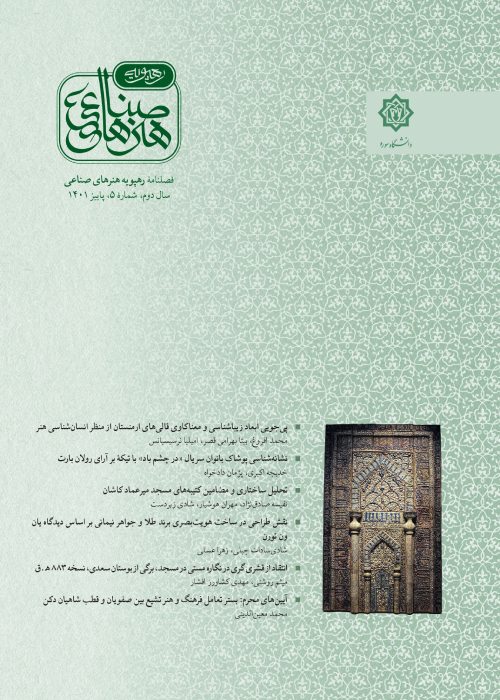Re-creating the Geometric Motifs of Iranian-Islamic Architecture in Algorithmic Design Based on Traditionalist Views
Author(s):
Article Type:
Research/Original Article (بدون رتبه معتبر)
Abstract:
Architecture is a dialectic and discursive space that carries the heritage of knowledge, culture, art, and expressive language and expresses dominant historical discourses. Landmark historic buildings are manifestations of current traditions and culture and represent the foundation of their creation. One of the most significant elements of Persian architecture is hidden and visible geometry in landmark historic buildings. As a form of sacred nature, geometry plays a fundamental role both in the creation of building structures and in the design of Iranian-Islamic architectural decorations. Considering the development and growth of technology in design tools, and the transformation of the way of thinking in digital design processes, it is necessary to examine the modes of representing traditions in general and re-creating geometry in particular from the perspective of structure and form. In this research, we are looking for the answer to how we can rely on traditionalist views, in the architectural design of today’s buildings, by applying computational and algorithmic design methods to represent the history and interact with tradition. And is it possible to give an identity to modern buildings by approaching to recreate the geometric motifs of Iranian-Islamic architecture based on digital design methods? In this regard, using the library method and analyzing significant examples of architecture with the approach of recreating the geometric motifs of the traditional art model, an effort is made to benefit from the views of traditionalists on the current geometry of Iranian-Islamic architecture. According to the research, the geometrical structure of the geometric motifs of Iranian-Islamic art and architecture, with the reliance of Muslim artist-mathematician, on Euclidean and Pythagorean geometry and scientific foundations, is a complete and harmonic coordination of form and meaning. Parametric and algorithmic design, with aesthetic features like the concepts of coordination of part and whole, proliferation, complexity, rhythm, and developed and evolved forms, is very compatible with the aesthetics of Iranian-Islamic geometric motifs based on the emphasis on the concepts of plurality in unity, complexity, repetition and systematic transformed geometric forms. The abstract nature and the formal and aesthetic features of the geometric motifs of Iranian-Islamic art and architecture are a rich and developable foundation and structure. And its recognition, analysis, development, and re-creation, which were difficult and complex tasks in the past, are now facilitated by the aid of new technology and tools to produce forms with algorithmic thinking and computer design.
Keywords:
Language:
Persian
Published:
Journal of Industrial Arts, Volume:2 Issue: 2, 2022
Pages:
35 to 50
https://magiran.com/p2581368
دانلود و مطالعه متن این مقاله با یکی از روشهای زیر امکان پذیر است:
اشتراک شخصی
با عضویت و پرداخت آنلاین حق اشتراک یکساله به مبلغ 1,390,000ريال میتوانید 70 عنوان مطلب دانلود کنید!
اشتراک سازمانی
به کتابخانه دانشگاه یا محل کار خود پیشنهاد کنید تا اشتراک سازمانی این پایگاه را برای دسترسی نامحدود همه کاربران به متن مطالب تهیه نمایند!
توجه!
- حق عضویت دریافتی صرف حمایت از نشریات عضو و نگهداری، تکمیل و توسعه مگیران میشود.
- پرداخت حق اشتراک و دانلود مقالات اجازه بازنشر آن در سایر رسانههای چاپی و دیجیتال را به کاربر نمیدهد.
In order to view content subscription is required
Personal subscription
Subscribe magiran.com for 70 € euros via PayPal and download 70 articles during a year.
Organization subscription
Please contact us to subscribe your university or library for unlimited access!



